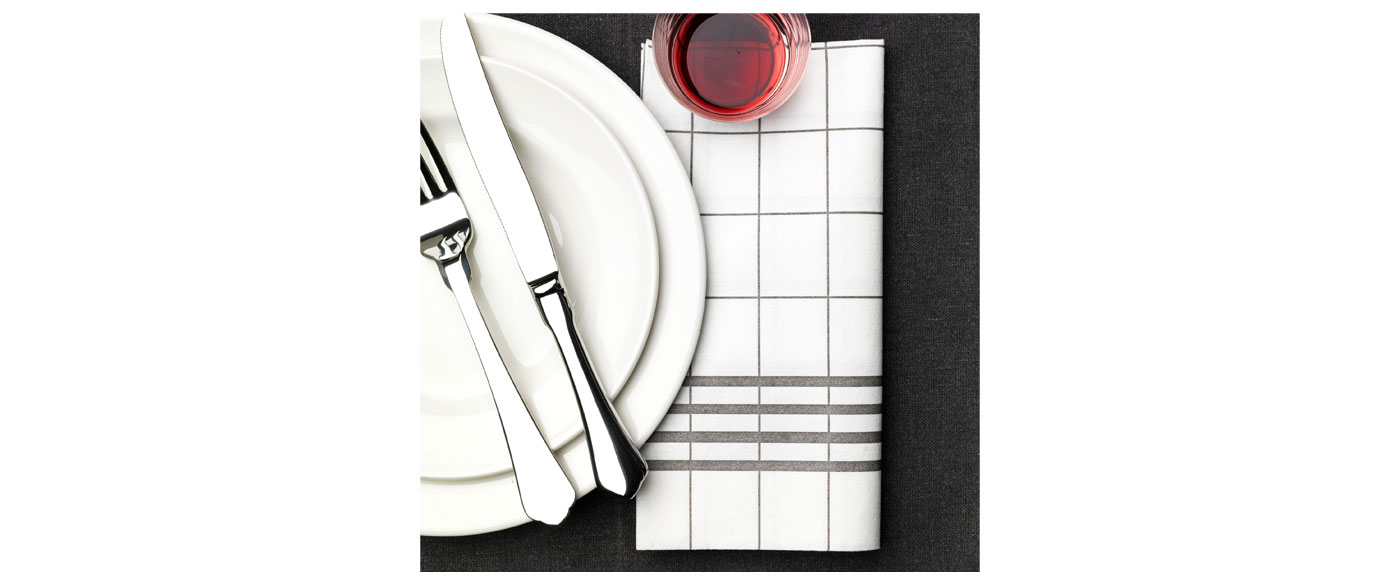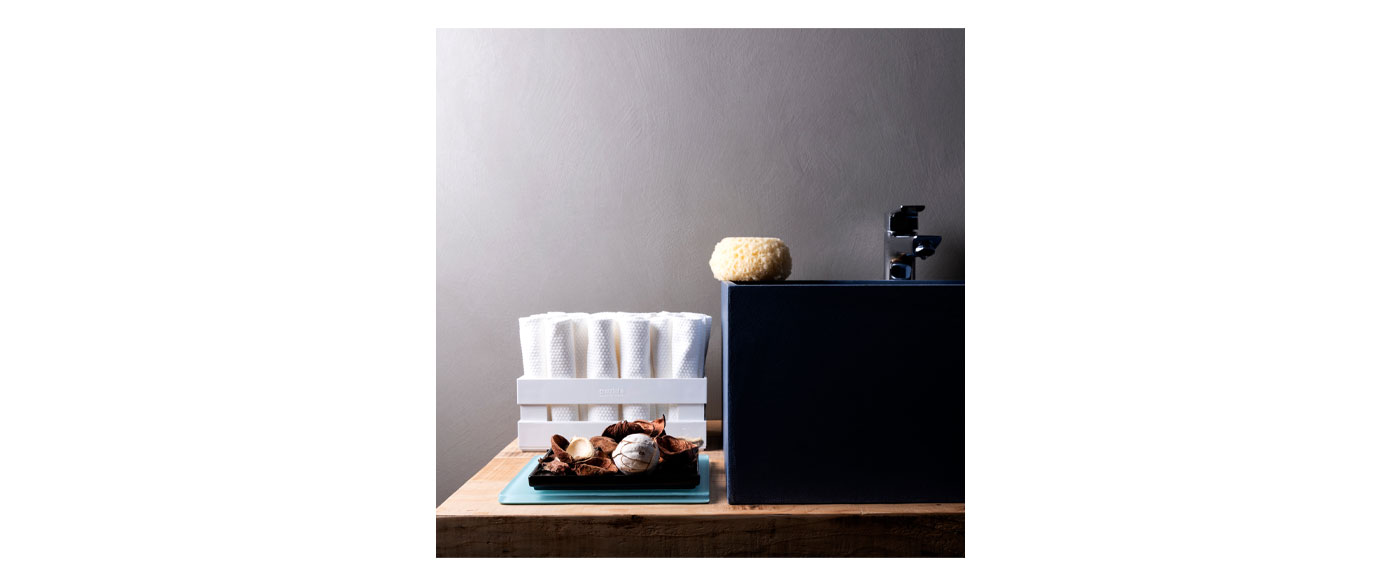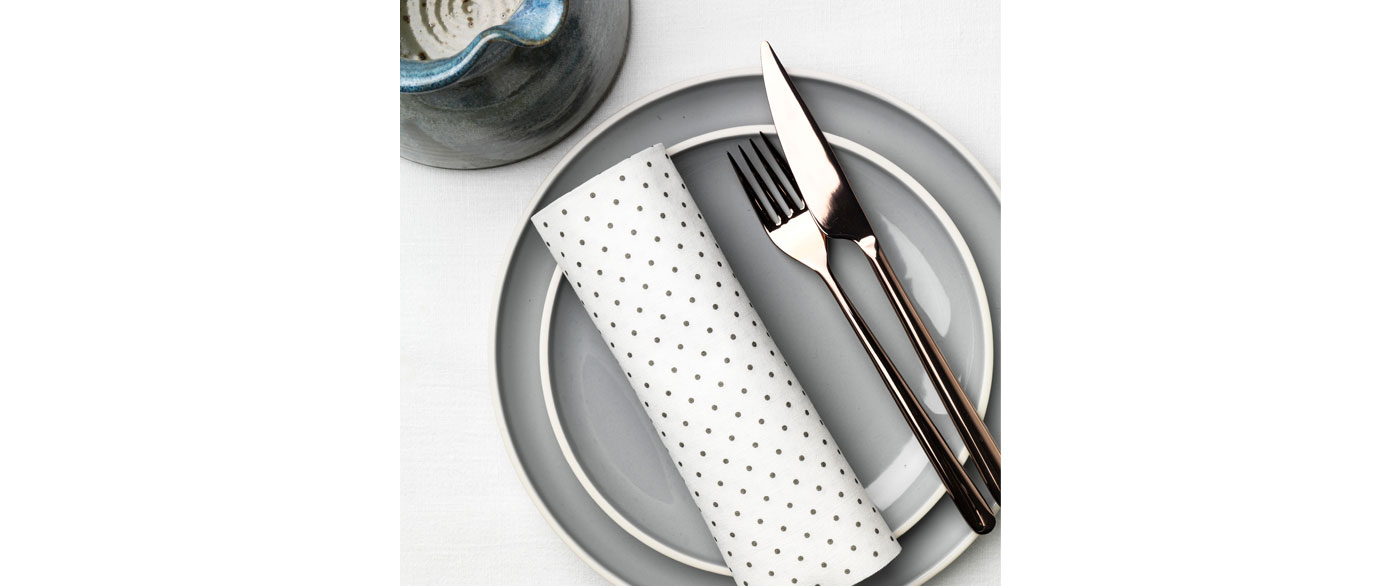Disposable napkins or cloth napkins?
Have you ever considered replacing cloth napkins in your establishment with other solutions? A disposable napkin is an excellent alternative, so understanding how to choose them is interesting to recognize the best model for your business. The choice of napkins explains whether the basis is economic, environmental protection and sensitivity, whether you want to convey an image of taste and aesthetics at the level of innovation and attention to detail, or the combination of all these factors.
Disposable napkins: how the table is presented
Currently, disposable nap kins are not only for pizzerias, ice cream parlors, foodtrucks, cafeterias, and more informal restaurants; in fact, even mid- to high-end establishments are increasingly using quality disposable napkins, which are also less cumbersome in terms of cleaning and disposal. Napkins are a highly visible product: they can add a touch of color and emphasize the elegance of the venue, reinforce the brand if personalized and the message if recycled. How the table is presented already tells a lot about the cuisine and service.
Napkin sizes
The size of the napkin, here we limit ourselves to square ones, should be just right and suitable for every occasion; for those who don't know, the sizes you see listed on the sites and on the packages always mean at the open napkin:
-
10x10 cm, 16x16 cm, and 17x17 cm: as a coaster, for brioche and countertop.
-
20x20 cm, napkins ideal for pairing with small appetizer or cocktail plates. The person using it often stands, holding the plate or glass in his or her hand; this is also why it is good to own two or more layers, because it is enough to wipe clean but easy to throw away.
-
25x25 cm, classic aperitif napkins. Suitable for food contact ideal for serving small snacks, but can also be used as drink coasters and for saucers. Another size designed for the convenience of a quick snack, which is often eaten standing up.
-
30x30 cm, napkins for fast food and informal settings where there is a rapid turnover of customers, who nonetheless consider comfort a value proposition.
-
33x33 cm, generally paper napkins always used in fast food, no less durable and absorbent.
-
38x38 cm, 40x40 cm, 45x45 cm: perfect for setting the table in pizzerias, restaurants, wine bars. Of these napkins you have the widest choice in terms of colors, patterns, materials. They excellently replace cloth napkins in terms of quality, softness and sturdiness.
The materials of the disposable napkin
When choosing the type of napkin, in addition to looking for the colors and patterns that best suit your needs, it is also important to consider the material, a characteristic that customers feel and experience through touch.
-
Paper napkins: paper and cardboard products, made directly from cellulose fibers, are disposable and inexpensive. White, versatile and one-ply, they are usually found inside napkin rings. This product meets the criteria of hygiene and convenience in businesses where there is a constant coming and going of customers. In the medium to long term, it is more convenient to opt for napkins of greater weight/thickness.
-
Tissue-Double Point: two layers that feel like one, thanks to the microdots that join them together. Soft, fluffy and bulky, these napkins are the 'link' between two-ply Tissue and Airlaid. Usually in bright, pastel colors, just the right size for use in quick or informal lunches.
-
Airlaid: the disposable napkin that can also be used in mid- to high-end venues due to its quality, softness and sturdiness. The choice between this type of napkin and cloth napkins is purely a matter of preference, since in terms of elegance, absorbency and pleasantness to the touch, Airlaid has little to envy to cloth.
-
Spunlace Like-Linen: the most cloth-like fabric on the market: viscose and cellulose actually form a napkin composed of half paper and half cloth. Elegant, spongy, liquid-resistant like cloth ones but disposable, made of high-quality nonwoven fabric and soft to the touch. Environmentally sustainable because they are compostable and biodegradable.
-
Spunbond: tnt more resistant to liquids and tears than conventional paper.
-
Feel Green eco-friendly line: napkins made from totally recycled material, compostable inks and non-toxic vegetable colors.
(Source: Garcia de Pou 2019/20 paper catalog)
Fold, weight and number of plies
Other factors that are often underestimated when choosing napkins are the fold (ranging from the standard ¼ to the ⅙ to the rarer ⅛), the grammage (the weight of the sheet is in grams: trivializing, the lighter the material from which it is made, the less it is meant to last), but above all, the choice of paper based on the number of plies from which the napkin is composed:
-
Single-ply napkins: most exploited in delicatessens, fast food restaurants, and fast food restaurants in general. They help customers clean up quickly, are inexpensive but as a result their shelf life in most cases is very short.
-
2-ply or 4-ply napkins: double-thick napkins must have the ability to wipe and absorb multiple times, they are obviously more expensive but also more comfortable, sturdy and durable.
-
Micropunched napkins: thin but strong napkins, produced by a process that makes them soft but low volume. Great for quality service at low cost, we recommend you choose them FSC-certified, meaning from controlled forests, and Ecolabel-labeled, certifying their sustainability. In many cases these napkins can be disposed of in compostable waste, while others are considered biodegradable material.
Suppliers of disposable napkins.
Disposable napkins are closely related to our perception of hygiene. Customers associate something unpleasant or even embarrassing with not being able to clean up satisfactorily during a meal. Choosing one napkin over another, possibly personalizing it or using it as a decorative element, is one of the most underestimated satisfaction factors. The advice remains to give a consistent look between the design of the restaurant and the napkin in general. The disposable napkin is no longer considered a choice peculiar only to low-cost venues: we have tried to explain how there are good reasons to avoid cloth without sacrificing quality.
Discover on RG Mania the best suppliers of disposable napkins: Bit, Duni, Fato, Fram, Garcia de Pou, Lucart Group, Okay.



